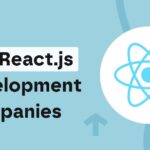Every groundbreaking digital product starts with a question: Can we actually build this? Before a single line of code is written or wireframe sketched, savvy teams dive deep into the most overlooked yet mission-critical phase the Technical Feasibility Study.
In a world driven by innovation and tight timelines, skipping this study is like constructing a skyscraper without surveying the ground. If you’re serious about product success, you need a roadmap built on facts, not assumptions.
Let’s uncover the secrets of mastering this unsung hero of project planning.
The Moment That Sparks the Study
Picture this: a startup founder has a game-changing app idea. Investors are ready. Deadlines are looming. But the CTO hesitates. Why? Because vision alone won’t validate if the backend can scale, if APIs exist, or if compliance can be maintained.
This is the moment when a Technical Feasibility Study transforms ambiguity into clarity. It’s not just about saying “yes” or “no” it’s about defining the how.
Why Skipping the Study Spells Disaster
Let’s say you launch without it. Three months in, you realize the data infrastructure can’t support real-time updates. You pivot. Costs skyrocket. Morale dips. That’s not just bad luck it’s bad planning.
A proper feasibility study reduces technical debt, prevents mid-project breakdowns, and saves your team from months of rework. It’s your product’s insurance policy.
Start With Defining Technical Requirements
You can’t assess feasibility without first understanding what you’re assessing. Start with scope clarity. What platforms will you build for? What integrations are needed? What security protocols are required?
A complete Technical Feasibility Study starts by translating high-level goals into tangible technical needs. This clarity drives the rest of the process.
Map Existing Infrastructure to Future Needs
Is your current stack ready for the new build? A feasibility study should map out what’s available and what needs to be built from scratch. Whether it’s cloud migration, third-party services, or legacy systems everything needs to be evaluated.
This comparison reveals potential pitfalls and helps you decide whether to build, buy, or integrate.
Risk Identification: The Unseen Landmines
Here’s where most teams falter they ignore what could go wrong. Will the mobile app require GPU acceleration? Will the existing database scale? Is your team skilled enough for the selected tech stack?
Flag these risks early. Document them. And plan mitigation strategies. A flawless Technical Feasibility Study shines light on the cracks before they deepen.
The Importance of Proof of Concept (PoC)
Words and charts are fine, but nothing beats a working demo. A small-scale PoC validates assumptions in real conditions. Whether it’s API integration, AI model accuracy, or performance benchmarking a PoC is your stress test.
PoCs are optional, but in high-stakes projects, they often make or break the green light.
Budget Meets Reality: The Tech-Cost Equation
Sometimes what’s technically possible isn’t financially viable. Your study must evaluate the cost of tools, licenses, hardware, cloud storage, and skilled developers.
When you align tech vision with budget constraints, you create realistic blueprints. This is how a Technical Feasibility Study serves both engineers and CFOs alike.
Timeline Validation: No More Guesswork
Optimism is great. But if you think a complex product can be built in 3 weeks, your team’s headed for burnout. Use the study to break down each module, estimate timeframes, and validate delivery dates.
Remember, a flawed estimate at the start can derail even the best agile teams.
Team Capability: Skills Inventory vs. Requirements
You might have a rockstar front-end team, but is anyone fluent in DevOps or cybersecurity? A feasibility study compares internal skill sets with project demands. This helps in planning training, hiring, or outsourcing decisions.
This honest audit prevents performance bottlenecks mid-sprint.
Legal, Regulatory, and Compliance Review
Is your system storing personal data? Operating in multiple countries? If so, legal compliance is non-negotiable. GDPR, HIPAA, PCI-DSS your Technical Feasibility Study must include these filters to avoid costly legal trouble.
Tech Stack Selection: Don’t Chase Trends
Everyone’s talking about AI, blockchain, and serverless. But is that what your project really needs? Choose a tech stack based on fit, not hype. Look at scalability, community support, maintainability, and compatibility with current systems.
A smart tech stack = long-term project health.
Document Everything And We Mean Everything
Every assumption, finding, and recommendation should be documented in a centralized, accessible format. This report becomes your project’s backbone.
At TKXEL, we treat documentation as sacred because it ensures that strategy translates to execution without ambiguity.
FAQs
What is a Technical Feasibility Study in software development?
It’s an in-depth evaluation that determines whether a proposed digital product or feature can be built with current technologies, skills, and infrastructure.
Why is a Technical Feasibility Study important?
It prevents costly failures, ensures alignment between goals and capabilities, and helps secure investor confidence by reducing unknowns.
How long does a Technical Feasibility Study take?
Depending on the project scope, it can take anywhere from a few days to several weeks. Critical projects may require extensive research and testing.
What should a Technical Feasibility Study include?
It should include scope, requirements, existing infrastructure audit, risks, PoC (if needed), cost analysis, timelines, team capability review, and compliance factors.
Can startups benefit from feasibility studies?
Absolutely. Startups, in particular, need to validate assumptions early to avoid wasting limited resources on technically unviable ideas.
Who should conduct a Technical Feasibility Study?
Experienced technical leads, architects, or consulting firms like TKXEL who understand both business and tech dimensions.
Conclusion: Your Blueprint for Tech Success
A successful product isn’t born out of code it’s born out of confidence. A Technical Feasibility Study doesn’t just answer, “Can we build it?” It empowers you to say, “We’re ready to build it smartly.”
From validating assumptions to uncovering blind spots, this step saves time, money, and careers. It’s not a delay it’s your launchpad.
- Why Technical Feasibility Studies Save Millions in Tech Development
- A successful product isn’t born out of code it’s born out of confidence. A Technical Feasibility Study doesn’t just answer, “Can we build it?” It empowers you to say
- Technical Feasibility Study
Related posts:
 Top 5 Custom Software Development Companies in Edmonton 2025
Top 5 Custom Software Development Companies in Edmonton 2025
 Best ReactJS Development Companies for Scalable Web Apps in 2025
Best ReactJS Development Companies for Scalable Web Apps in 2025
 Find the Best Grocery Delivery App Development Company for Startups
Find the Best Grocery Delivery App Development Company for Startups
 Send Money to India from the USA: Essential Tips for Getting Maximum Value and Saving on Transfer Costs
Send Money to India from the USA: Essential Tips for Getting Maximum Value and Saving on Transfer Costs
 Boost Your Business with These App Development Companies in Kuwait
Boost Your Business with These App Development Companies in Kuwait
 Hire Python Developers: Unlock the Power of Expert Python Development Services
Hire Python Developers: Unlock the Power of Expert Python Development Services
 Future Outlook: How Microsoft Dynamics Partners in New York are Preparing for Industry 4.0
Future Outlook: How Microsoft Dynamics Partners in New York are Preparing for Industry 4.0
 Top Features to Increase User Retention in Mobile Application
Top Features to Increase User Retention in Mobile Application







